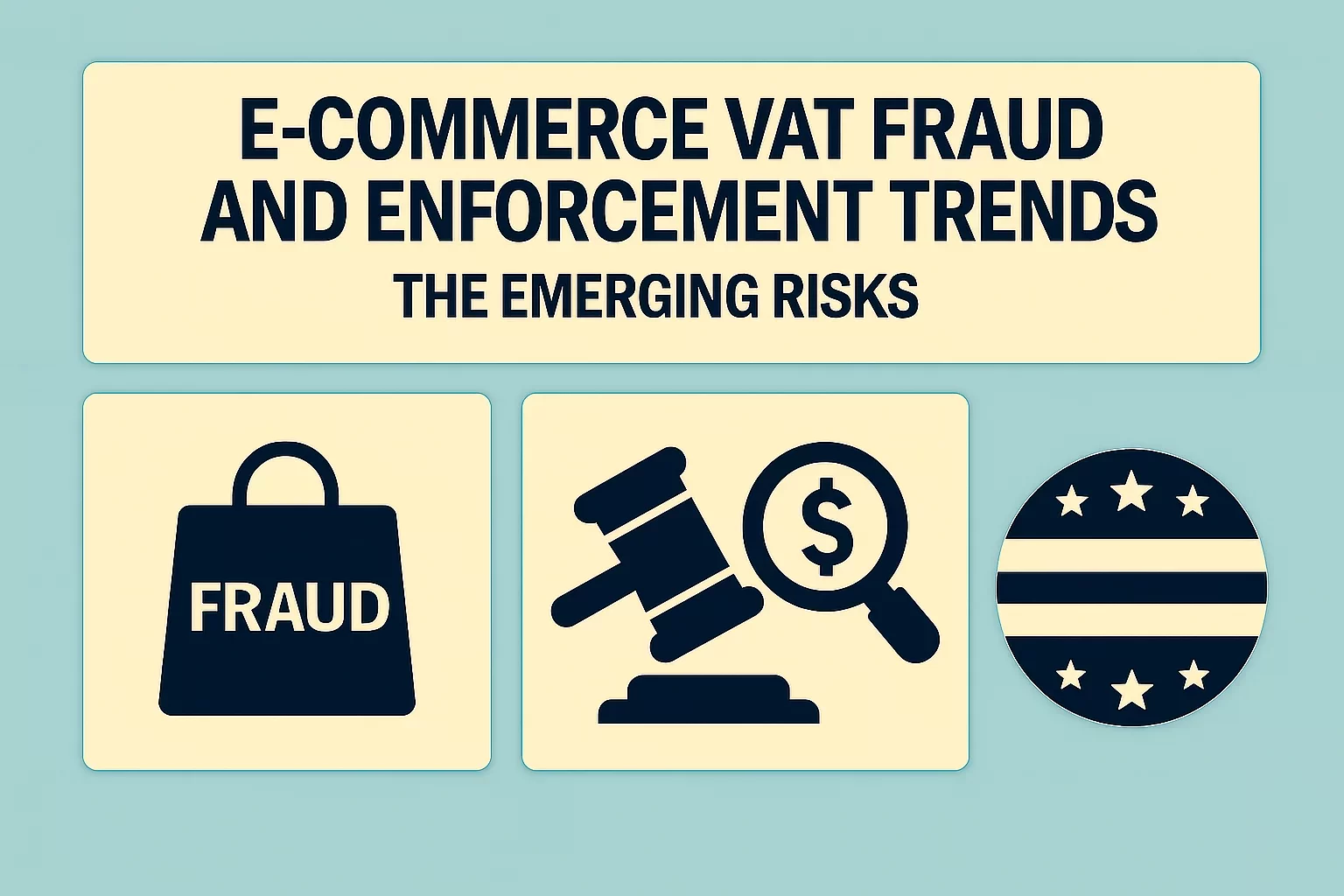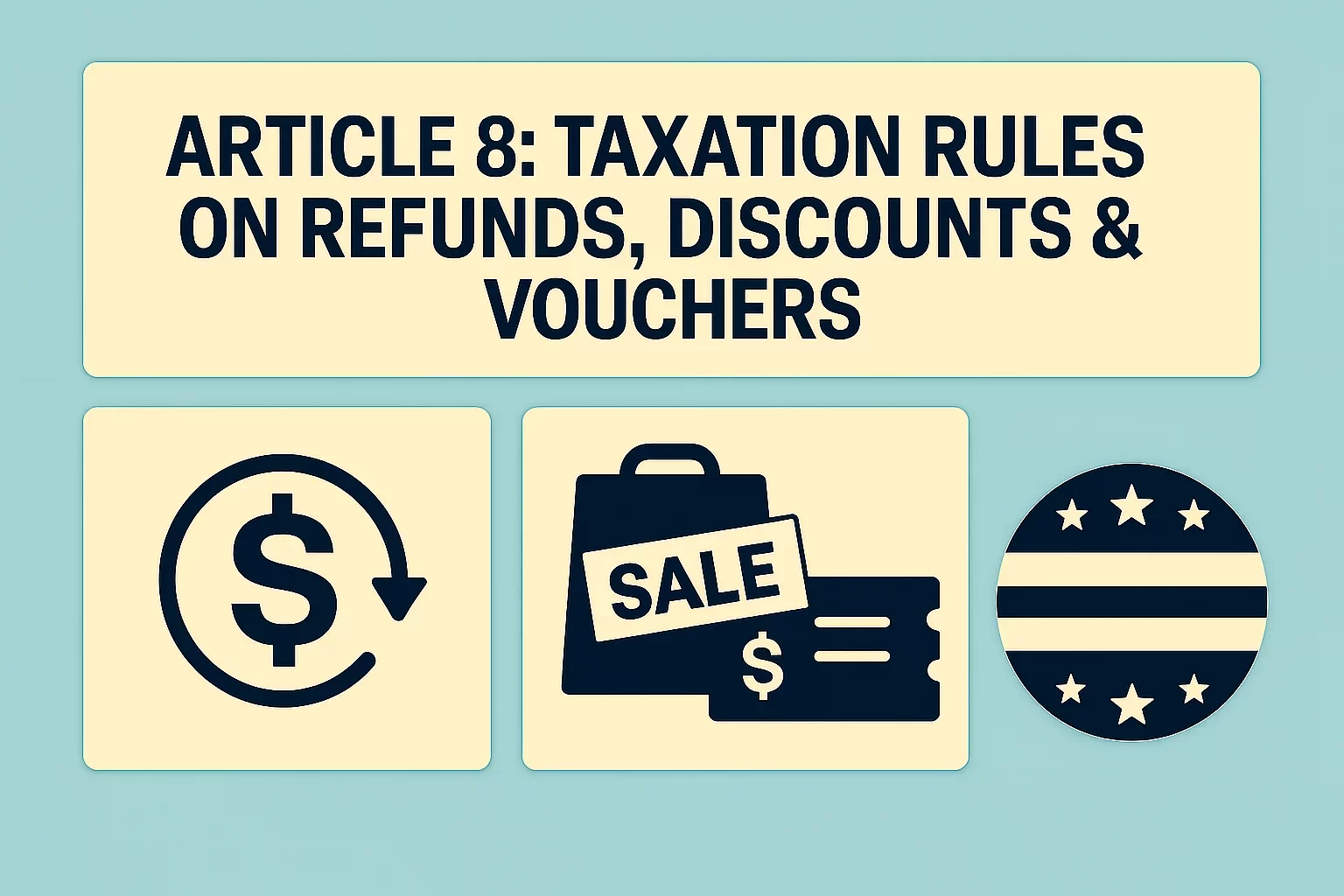Logistics, Warehousing, and VAT Implications
Explore the VAT considerations involved in warehousing and logistics for e-commerce, including the impact of cross-border movement of goods.
Consumers nowadays expect that the goods they purchase arrive at their doorsteps within hours, or at least within a couple of days. Consequently, businesses are increasingly relying on complex logistics networks to store, transport, and deliver goods across borders.
From warehousing models to cross-border fulfillment and Incoterms, each decision can affect tax obligations, compliance burdens, and costs. While the biggest e-commerce companies and platforms offer solutions for each stage of the sales and delivery process, smaller sellers still need to understand how logistics operations intersect with taxability rules.
Key Logistics Models in E-commerce
There are several different logistics models typically used in e-commerce. Besides owning a warehouse, e-commerce businesses, especially smaller ones, may decide to outsource the warehousing and delivery of the goods they sell. The most commonly used outsourcing logistics models are Third-Party Logistics, also known as 3PL, Fulfillment by Marketplace, such as Fulfillment by Amazon (FBA), and the dropshipping models.
Owning a Warehouse
Depending on the resources available and the preferred business model, e-commerce companies may decide to store goods in a facility that they own or lease, thereby taking direct control over their inventory and supply chain. However, this approach may result in VAT registration obligations in the country where the warehouse is located. The key issue is whether the warehouse will establish a permanent establishment for VAT purposes.
In the EU legislature, storing goods may lead to a fixed establishment, which is defined as any place other than the place of establishment of a business, characterized by a sufficient degree of permanence and a suitable structure in terms of human and technical resources.
Similar implications arise in other jurisdictions. For example, in the US, owning or leasing a warehouse or storage unit in most US states results in establishing a physical presence, that is, a physical nexus. As a consequence, businesses with physical presence must register for, collect, and remit sales tax, which is equivalent to the EU's VAT.
Third-Party Logistics (3PL) Model
The 3PL model refers to a model where a seller, store, or business outsources all their logistics to a specialized third-party logistics operator to manage transportation, warehousing, and inventory. Depending on the location and contractual structure, a 3PL setup may shift VAT collection duties, alter the place of supply, or trigger local registration requirements.
Fulfillment by Marketplace Model
The Fulfillment by Marketplace model gained recognition primarily through the Fulfillment by Amazon (FBA) program, which enables the pre-positioning of goods in multiple countries, or in the case of the US, various states.
For online sellers utilizing these marketplaces, FBA and similar programs offer automatic movement of goods across borders. However, these may also lead to multiple VAT registrations. The EU's OSS or IOSS schemes may simplify the VAT compliance process, depending on the seller and the origin of the goods. In the US, the marketplace facilitator rules made the whole process of sales and use tax compliance easier. However, e-commerce and online marketplace sellers must still be aware of the state-specific nexus rules.
Dropshipping Model
In a dropshipping logistics model, an e-commerce seller or business does not take physical possession of the goods but arranges for direct shipment from the supplier to the customer. E-commerce businesses offer, advertise, and sell goods, but these goods are typically shipped directly from the manufacturer or supplier to the end consumer. This type of transaction is often considered as B2B2C, and consists of two transactions, but only one transportation of goods.
Before the EU 2021 e-commerce package, this would have been treated as two taxable transactions. One being an intra-Community acquisition in the business's country, and the second a domestic B2C sale in the consumer's country. However, as of July 2021, e-commerce businesses may use the OSS scheme to simplify VAT compliance and mainly avoid multiple VAT registrations in the EU. However, several conditions must be considered when applying these rules.
In the US, there are also two transactions in place. One is a retail transaction between the seller and the consumer, taxed according to state rules and the nature of the goods purchased or the type of consumer. The second transaction is between the seller and the manufacturer, which is typically considered a resale transaction. These transactions are tax-exempt in every state in the US.
VAT and Incoterms: Clarifying the Place of Supply in Global Logistics
Although the International Commercial Terms, or Incoterms, are not tax rules, they play an essential role in shaping tax consequences by defining the responsibilities of buyers and sellers in international trade. Depending on the agreed Incoterm, the moment at which ownership, risk, and delivery obligations shift can also determine where the VAT liability arises.
Out of 11 Incoterms, defined by the International Chamber of Commerce (ICC), the five most frequently used in e-commerce are EXW (Ex Works), FCA (Free Carrier), FOB (Free On Board), CIF (Cost, Insurance, and Freight), and DDP (Delivered Duty Paid). Depending on which of these parities is used, the VAT liability may lie with the buyer, as is the case if the agreed-upon Incoterms parity is EXW, or with the seller, in cases where the DDP parity is agreed upon.
As a consequence of the preferred Incoterms, liability for paying import VAT on goods imported into the EU may lie with the consumer or the seller. Typically, e-commerce businesses take this obligation on themselves.
Key Considerations for E-commerce Businesses
Logistic and VAT compliance may seem like two separate elements of e-commerce businesses, but they are tightly interconnected. Selling internationally or across borders, whether through online marketplaces or a direct-to-consumer approach, requires careful consideration of all tax-related obligations associated with warehousing, fulfillment, and delivery structures.
In the EU, the introduction of the One-Stop Shop (OSS) and Import OSS (IOSS) regimes has simplified some reporting for B2C transactions, but these systems do not cover all scenarios. Additionally, accurate invoicing and maintaining real-time inventory tracking are critical to staying compliant. E-commerce businesses that utilize Incoterms in their operations must carefully consider which Incoterms are best suited for their business needs, depending on the type of business model they employ.
The decision to use their own warehouse or to outsource to a third-party provider can have a significant impact on VAT requirements. Therefore, e-commerce businesses should not underestimate the significance of this business decision. While larger e-commerce companies may opt for complete control over every aspect of the supply chain, smaller businesses may benefit from utilizing third-party logistics providers to reduce costs and enhance delivery efficiency.
Conclusion
Each of the present warehousing and distribution models brings distinct VAT implications that must be anticipated and addressed. What may seem like a strategic decision to expand warehousing or adopt a fulfillment partner ends up also as a matter of legal and tax significance.
This showcases how complex e-commerce is, and that it is more than simply offering and selling goods. In addition to understanding VAT, GST and sales tax implication on their sales of goods, businesses must also consider tax implications of deciding where to store inventory and how to deliver it to consumers.
E-commerce businesses typically use one of the following logistics models: owning a warehouse, using Third-Party Logistics (3PL), Fulfillment by Marketplace (such as Amazon FBA), or dropshipping, where each of these models carries different tax and compliance obligations.
FBA often involves automatic transfer of goods between countries or states, which can lead to VAT registration in multiple EU countries.
The EU OSS scheme is specifically designed to allow B2C sellers to report and remit VAT across multiple EU countries through a single VAT registration. However, it does have its limitations, since it does not apply to all scenarios, such as B2B sales.
Incoterms define the responsibilities of buyers and sellers in international trade, and influence who is liable for import VAT and where the place of supply is considered to occur for VAT purposes.
Source: European Commission, Amazon - Guide to Third-Party Logistics (3PL) on Amazon UK, Amazon - Getting started with European VAT: What you need to know, VATabout - US Sales Tax & Retail Delivery Fee Implications for E-Commerce Businesses, Shopify, DHL - Logistics for E-commerce, DHL - What is Incoterms in Export


